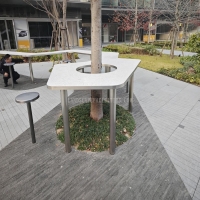Welcome to the website for landscape facilities products and knowledge.
How does the bin’s design account for ease of use by individuals with mobility challenges?
For individuals with mobility challenges, everyday tasks like disposing of waste can be difficult without the right tools. Modern bin designs prioritize accessibility by incorporating features that minimize physical strain and maximize convenience.
1. Hands-Free Operation: Many bins now include motion sensors or foot pedals, allowing users to open lids without touching them. This is especially helpful for those with limited hand dexterity or strength.
2. Ergonomic Handles: Bins with wide, cushioned handles make carrying and maneuvering easier for people with arthritis or weak grip strength. Some designs even feature rolling wheels for effortless transport.
3. Optimal Height and Angle: Adjustable or tilted bins reduce the need for bending or stretching, catering to wheelchair users or those with back problems.
4. Lightweight Materials: Light yet durable materials ensure bins are easy to move without sacrificing stability.
5. Clear Visual Indicators: High-contrast colors and tactile labels help users with visual impairments identify different compartments (e.g., recycling vs. trash).
By integrating these thoughtful features, bin manufacturers create inclusive solutions that empower individuals with mobility challenges to maintain independence in daily life.
Related search:

Recommendation
An outdoor bar counter with stainless steel and terrazzo materials in an irregular shape